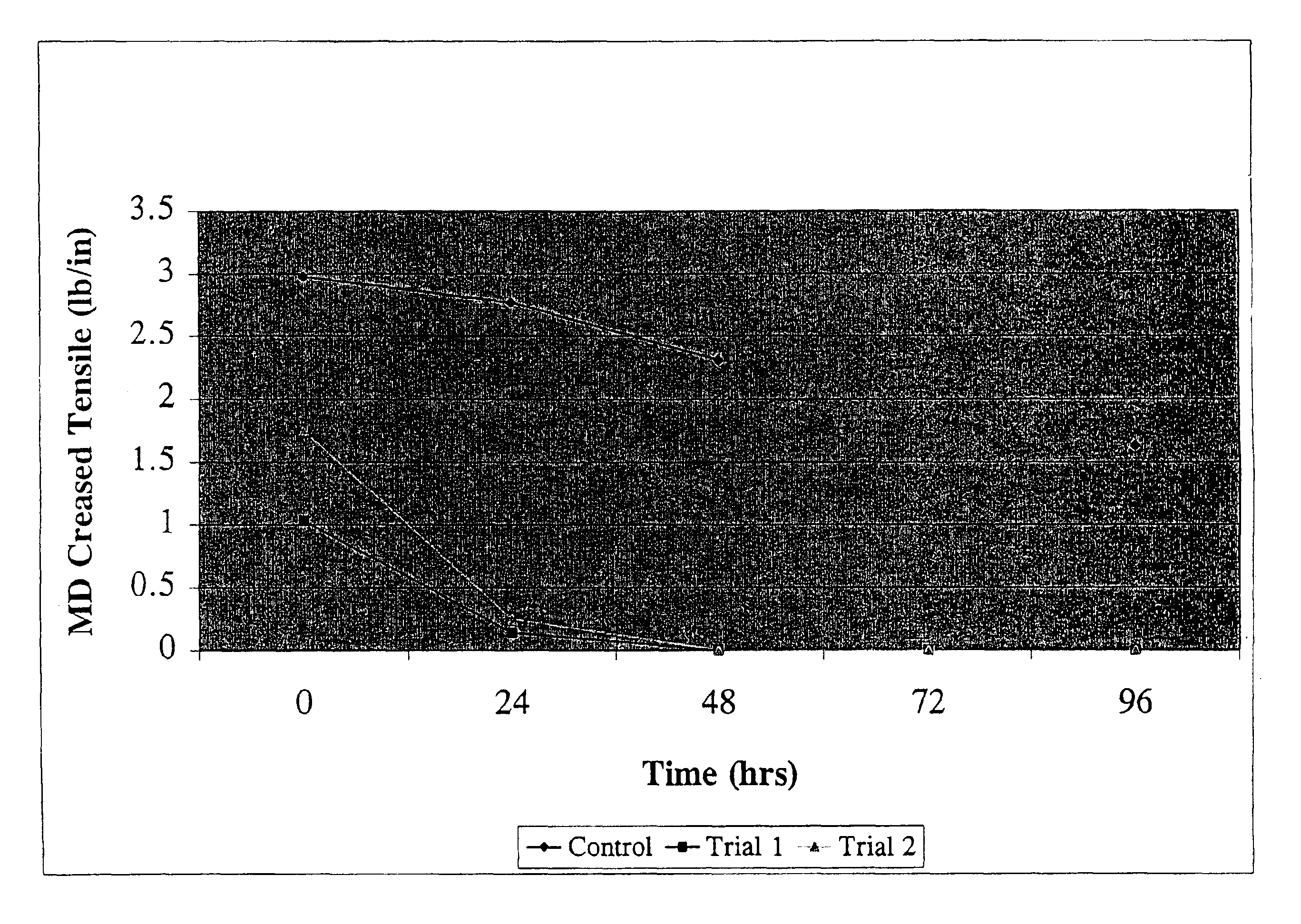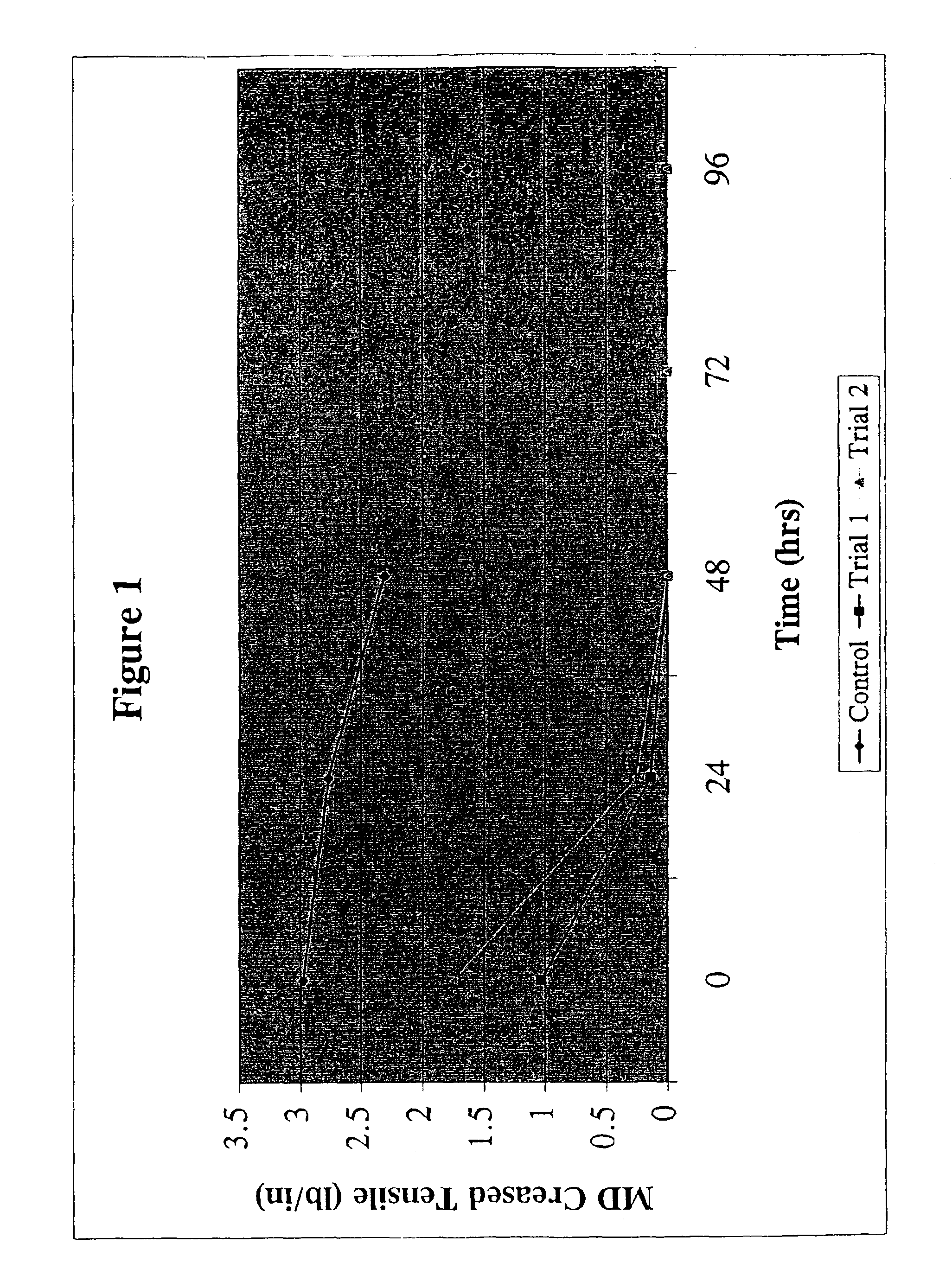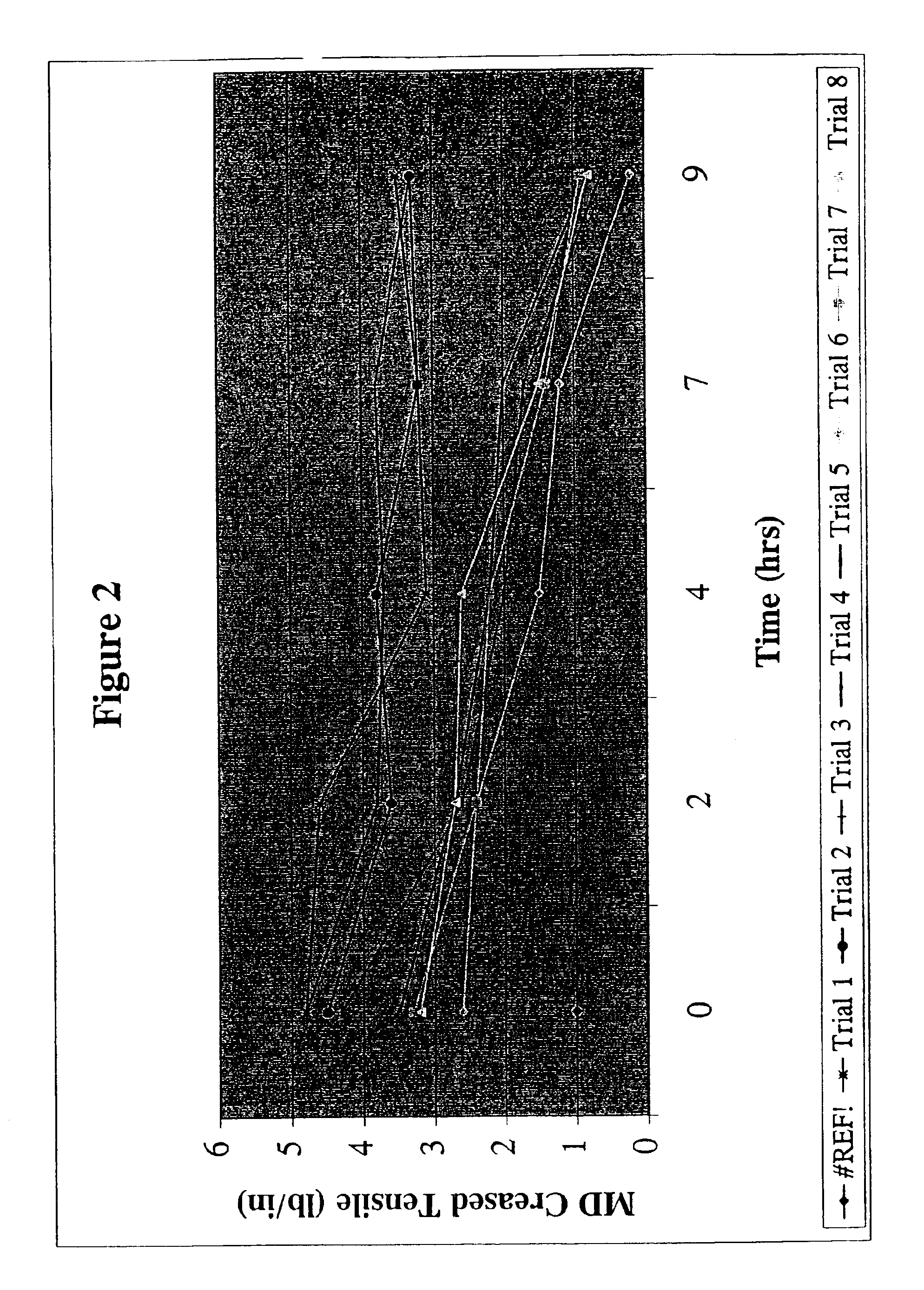Low boron containing microfiberglass filtration media
a microfiberglass and filter media technology, applied in the field of nonwoven glass fiber composites, can solve the problems of unintentional p-type doping, glass filter boron contamination, boron contamination on silicon wafers, etc., and achieve the effect of enhancing filtration performance characteristics and little tolerance for boron based contaminants
- Summary
- Abstract
- Description
- Claims
- Application Information
AI Technical Summary
Benefits of technology
Problems solved by technology
Method used
Image
Examples
example 1
[0061]A series of trials were run in the following manner:
[0062]A slurry was formed by combining 4000 liters of fresh, cleaned water for which the temperature was adjusted to between 75 and 100° F. and the pH was adjusted to between 2.3 and 2.9 with between 70 and 90 kg of chopped glass reinforcement fibers to a percentage solids of between 1.8 and 2.4% in a hydropulper. The slurry was circulated for between 2 and 15 minutes. Between 140 kg and 160 kg of glass microfiber wool and 7600 liters additional water was added to the slurry to a percentage solids of about 2.0% and circulated for between 2 and 15 minutes. This slurry was then transferred to a holding chest with an additional 12,000 liters of water added to for a final percent solids of about 1.0%. The stock from this slurry provided the main flow to the paper machine.
[0063]A second slurry was formed by combining 9500 liters of fresh, cleaned water for which the temperature was adjusted to between 75 and 100° F. and the pH was...
example 2
[0072]A second series of trials was made in the same manner as Example 1. These trials were made with a binder consisting of a nonionic acrylic ester latex and a water soluble acrylic ester, acrylic acid copolymer, a cationic fluoroacrylic polymer fluorocarbon water repellant at the same levels as Example 1, such that the web retained between 4 and 7% binder after drying. The Humid Aging results for these series of trials is given in FIG. 3. Two out of three of the trials showed similar humid aging to the control which was composite of Manville 475 and E glass chopped strands described above. One trial did show a loss over the test time, but retained some strength up to 48 hours.
[0073]Trial number 1, a composite sample, had an ULPA efficiency of 99.9995% minimum efficiency on MPPS when tested at 2.5 cm / sec air face velocity. The sample had an average binder content of between 4.5 and 6.5%, with between about 15 and 22% low boron chopped fiber, e.g., less than 1.0% boron, i.e., no bo...
example 3
[0078]A sample composite was prepared following Example 1 with the addition of 0 to 2.0% polyvinyl alcohol fiber added as a reinforcement fiber. The binder, water repellent and surfactant composition was like that of Example 1 such that the total organic content of the composite was between 4.0 and 10%.
[0079]FIG. 1 demonstrates that the control sample, described above, retains superior creased tensile strength in comparison to trials 1 and 2 of Example 3 which have incorporated into the borosilicate glass wool a chopped fiber, Chem glass, having high sodium content and a fairly low calcium content 67% SiO2, 7.0% Al2O3, 12% NaO, 9.5% CaO, and 4.2% MgO. These values suggest that low boron media having sodium oxide concentrations of greater than 5.0% and calcium oxide levels below 20% do not retain adequate crease tensile strength. FIGS. 4 and 7 show the MD tensile strength and percent elongation, respectively, of the control and trials 1 and 2 of Example 3.
PUM
| Property | Measurement | Unit |
|---|---|---|
| diameter | aaaaa | aaaaa |
| diameter | aaaaa | aaaaa |
| diameter | aaaaa | aaaaa |
Abstract
Description
Claims
Application Information
 Login to View More
Login to View More - R&D
- Intellectual Property
- Life Sciences
- Materials
- Tech Scout
- Unparalleled Data Quality
- Higher Quality Content
- 60% Fewer Hallucinations
Browse by: Latest US Patents, China's latest patents, Technical Efficacy Thesaurus, Application Domain, Technology Topic, Popular Technical Reports.
© 2025 PatSnap. All rights reserved.Legal|Privacy policy|Modern Slavery Act Transparency Statement|Sitemap|About US| Contact US: help@patsnap.com



